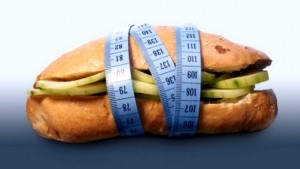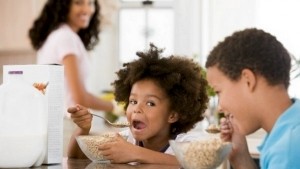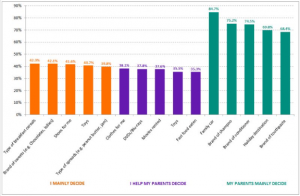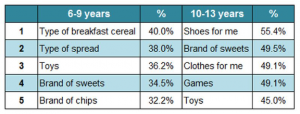This week Down Under
Where do sausages come from? Parents prefer to tell kids the facts

Heather Bray and her colleagues at the University of Adelaide recently published a study investigating how farm animal production is discussed in Australian households.
“We found that most of the conversations about meat were happening in the home around meal times, and that the majority of parents in our study had talked to their children before they had turned five years old,” she said.
“Prior to this research, there really wasn’t any information out there about how parents talked about where meat came from.”
The results were obtained by surveying 225 city-living and rural families across New South Wales, South Australia and Western Australia.
The study also uncovered some differences in how women and men talk about and manage their kids’ attitudes to meat.
“Female carers were more likely to agree that their children could make their own decision about whether or not to eat meat, and be more understanding if they stopped eating meat,” Dr Bray explained.
“Fathers tended to be more inclined to feel that eating meat is important, and that kids should eat what they’re served.”
They also found that living in urban versus rural areas had an impact.
“Urban parents were more likely to feel they lacked sufficient knowledge to have good conversations about meat, and to have preferred to avoid these sorts of conversations,” said Dr Bray, a senior research associate in the School of Humanities.
“More regional parents said it wasn’t a big deal, and that it should all be out in the open.”
Raised on a farm, Tiki Swain now lives in suburban Western Australia with her meat-eating partner and two children aged four and six, and is mostly vegetarian by choice. Although she wasn’t involved in Dr Bray’s survey, she is familiar with the issue.
“We’ve talked a bit with the kids about where meat comes from,” she said. “We stick to the idea that this is from a real animal, and not something that appeared magically on the supermarket shelf.”
Swain and her partner answered questions as soon as the kids started asking them, from around the age of three.
“Talking about the origins of meat is important,” she said. “Otherwise there's no connection between source and result, no idea that everything has to come from somewhere and that there's a cost.”
Dr Bray said the broad issue of cost—not just financial, but also thinking about resources and the environment—will be a critical factor for future-proofing food production.
“With 7bn people living on planet Earth, and food production having a huge impact on the environment, improving awareness around where our food comes from is vital,” she said.
“It’s important that we support parents so they can have these conversations at home,” said Dr Bray.
More stories from Down Under...
Survey: Australians fed up with fad diets
The overwhelming majority of Australians are fed up with food trends and fad diets, with 94% of them viewing these as status symbols, according to research.
The survey, released by Galaxy Research, which surveyed 1,000 Australians on behalf of cereal brand Uncle Tobys, also revealed that one in five consumers believe these trends do not offer good value for money.
Instead, Australians prefer to make less effort on their diets, with 81% saying a simple approach to a healthy eating was better suited for their lifestyle, particularly at breakfast.
The research found that 41% of those who started their morning with a simple bowl of cereal made better health decisions throughout the day, and 61% were more likely to choose low-sugar foods afterwards.
Dietitian Geraldine Georgeou said it was refreshing to see that the majority of Australians were able to look past the craze of food trends and fad diets.
“Aussies are right in saying that there are other foods which are just as healthy as the latest fad food, so investment in this isn't necessary,” she said.
The new research also found that the majority of Australians took a more relaxed approach to their diets, with only one in 10 opting for special diet such as Paleo or sugar-free.
Most said they tried to eat well to stay healthy, while almost half said they did it to lose weight. Meanwhile, nearly a quarter said they felt guilty when making bad food decisions and opting for unhealthy foods.
Pester power: How kids influence household buying decisions
Children rule the roost when it comes to some family food choices, with offspring largely responsible for choosing most of the snack food in the Australian weekly shop.
When asked to nominate which items the kids “mainly decide” to buy from a list of 30 products ranging from food and leisure goods to technology and toiletries, 42.3% of those aged between six and 13 years chose breakfast cereals, 42.1% said brand of sweets and 39.8% named spreads and jams.
But while many kids may not have the final say on household buying decisions, their opinions do count. For example, 35.3% reported helping their parents decide on fast food destinations, while many more were involved in decisions on clothes, DVDs and toys.
Not surprisingly, Australian children aged 10-13 are consistently more influential than 6-9 year-olds in their family’s purchasing decisions, and tend to use their pester power for different kinds of items than younger children.
While the 6-9-year-old age group is most likely to exert influence over food-buying decisions, with toys being the only inedible item in their top five, older children’s input mainly decides on shoes, clothes and leisure purchases, with the only food in their top five being sweets and chocolates.
According to Michele Levine, chief executive of Roy Morgan Research, which conducted the survey, the top five consumer products Australian children feel they “mainly decide” to buy tend to be items with a child-focused approach to advertising.
“Breakfast cereal brands, for example, are renowned for targeting kids, whether in an aspirational way like Nutri-Grain—if you eat Nutri-Grain, it’ll help you become an iron man—or in a fun, cartoony way,” said Levine.
“Froot Loops spring to mind—even their website is a technicoloured bonanza of games and videos. ‘Kidfluence’ does the rest, as children pester their parents to buy the cereal they’ve seen advertised.”
However, as kids grow older and their tastes develop, their input into household buying decisions grows.
“Savvy marketers and brands wishing to succeed with this sought-after consumer group must be able to identify whether to target kids directly or appeal to their parents, who let’s face it ultimately control the purse strings,” Levine added.
Australia the world leader in Salmonella outbreaks
Australia has more outbreaks of Salmonella than any other country, according to researchers who found 73 cases of the bacteria per 100,000 people last year.
Salmonella is the second highest cause of bacterial food-borne gastroenteritis in Australia after Campylobacter, and along with Listeria monocytogenes, it is responsible for more deaths in Australia than any other food-borne disease, each accounting for about 15 deaths per year, according to Csiro.
Last year, a number of outbreaks were reported, including one that affected 250 school principals attending a conference in Brisbane that was attributed to cross-contamination and poor hygiene.
This year has seen several reported outbreaks, including one allegedly caused by meat and salad rolls from a Sydney bakery, and another from fresh produce that possibly resulted in more than 100 people becoming unwell and sparked a widespread recall of 30 bagged leafy green products. As a result, a nationwide drop in sales for other bagged-salad producers has been reported.
“It’s difficult to tell whether food-borne illnesses overall are on the rise or not, but we do know that there are now better detection, tracing and reporting systems, and with social media, people are likely to hear about it more easily and quickly,” wrote researchers at Australia’s government research institute in an online post.
What was unusual about the latter outbreak was that it was in leafy greens, nationwide and that the serotype was Salmonella Anatum, one of 2,000 different strains of the virus.
Symptoms are similar to infection caused by other Salmonella, including fever, diarrhoea, vomiting and abdominal discomfort, though it appears to be a milder and shorter-lived form
“Salmonella Anatum can cause disease in humans, but in Australia is most frequently isolated from animals such as cattle, sheep, pigs, goats and chickens, and their environments,” the Csiro researchers wrote.
According to an American study from 2012, the strain was suspected in only one or two out of dozens of outbreaks it investigated.
With just over 17,000 Salmonella cases recorded last year, though, Csiro believes that more research is needed to find out why that is, how it’s transmitted and what can be done about it.
The institute says it is currently working with health authorities and supporting the food industry in a range of food safety and public health issues.
















